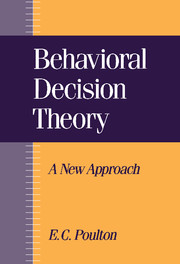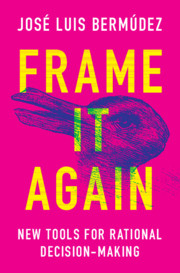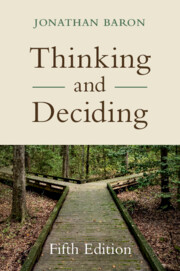Behavioral Decision Theory
This book discusses the well known fallacies of behavioural decision theory. It shows that while an investigator is studying a well-known fallacy, he or she may introduce, without realizing it, one of the simple biases that are found in quantifying judgements. The work covers such fallacies as the apparent overconfidence that people show when they judge the probability of correctness of their answers to two-choice general knowledge questions using a one-sided rating scale; the apparent overconfidence in setting uncertainty bounds on unknown quantities when using the fractile method; the interactions between hindsight and memory; the belief that small samples are as reliable and as representative as large samples;; the regression fallacy in prediction; the availability and simulation fallacies; the anchoring and adjustment biases; and bias by frames. The aim of this book is to help readers to learn about the fallacies and thus to avoid them. As such, it will be useful reading for students and researchers in probability theory, statistics and psychology.
Product details
December 1994Hardback
9780521443685
336 pages
237 × 160 × 21 mm
0.64kg
36 b/w illus. 46 tables
Available
Table of Contents
- 1. Outline of heuristics and biases
- 2. Practical techniques
- 3. Apparent overconfidence
- 4. Hindsight bias
- 5. Small sample fallacy
- 6. Conjunction fallacy
- 7. Regression fallacy
- 8. Base rate fallacy
- 9. Availability and simulation fallacies
- 10. Anchoring and adjustment bias
- 11. Expected utility fallacy
- 12. Bias by frames
- 13. Simple biases accompanying complex biases
- 14. Problem questions
- 15. Training
- 16. Uncertainties.






